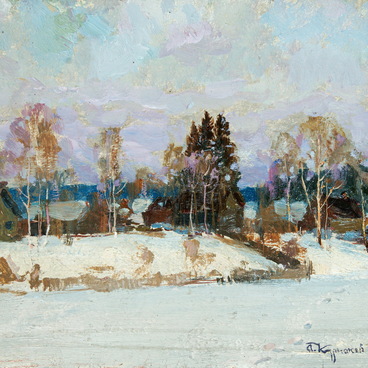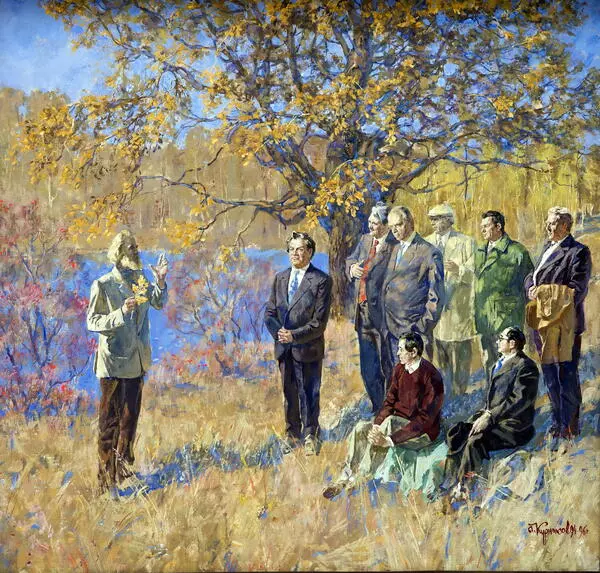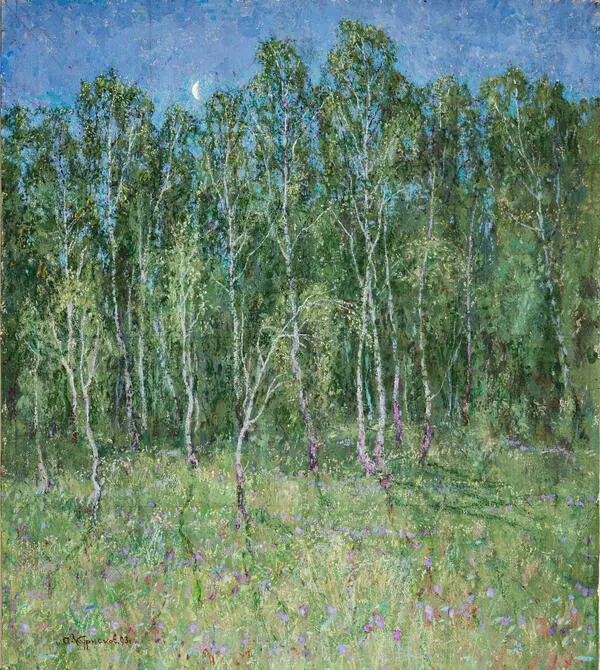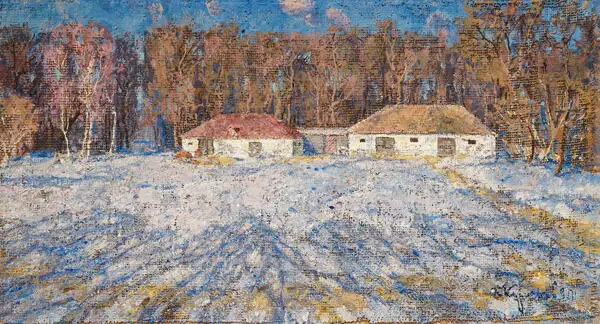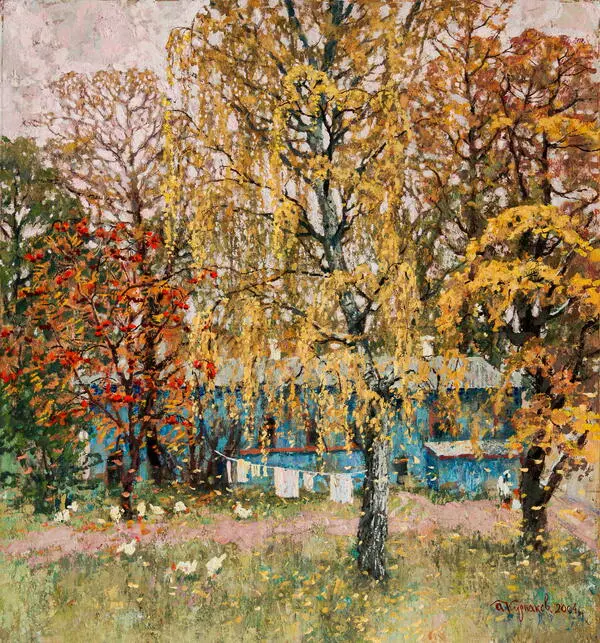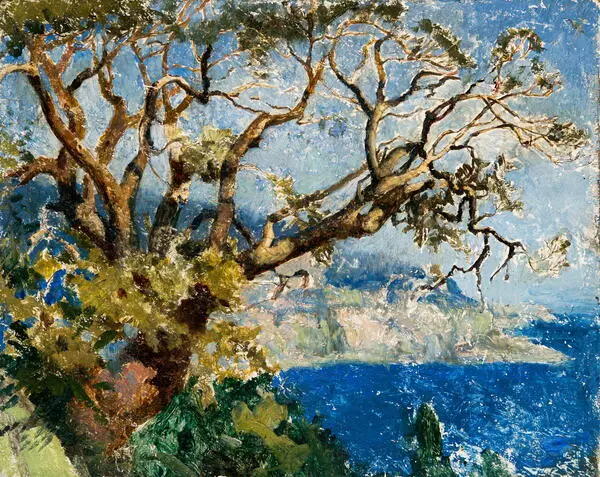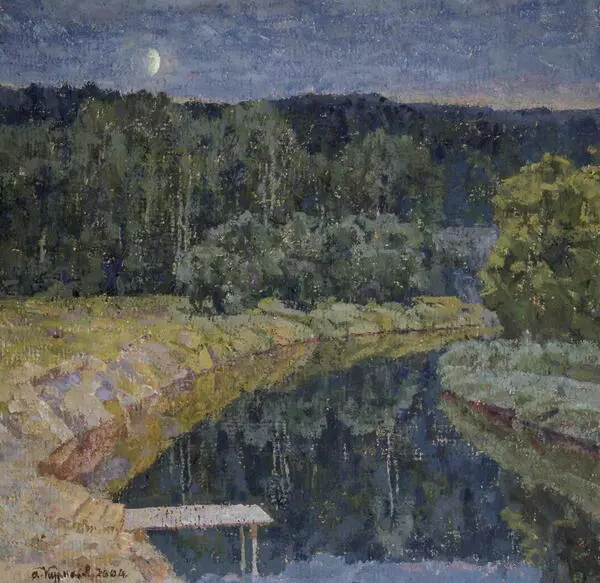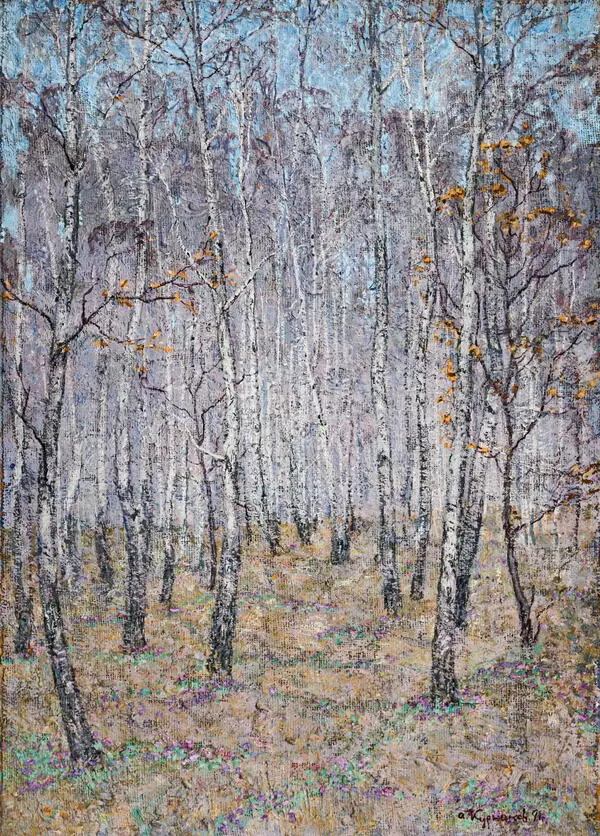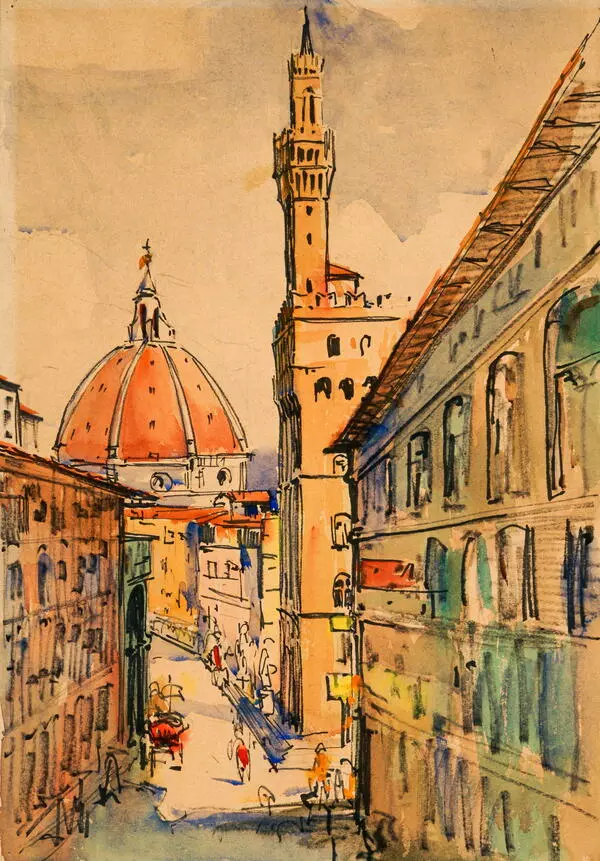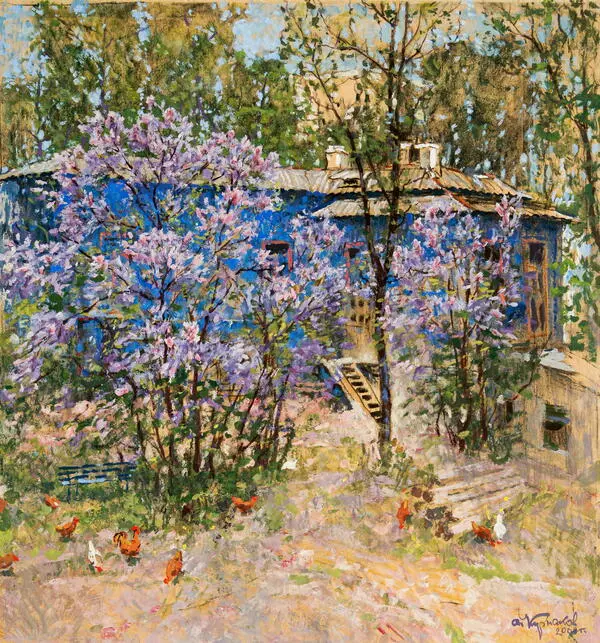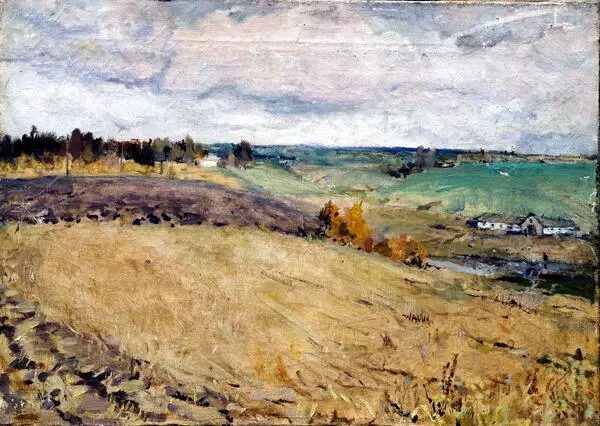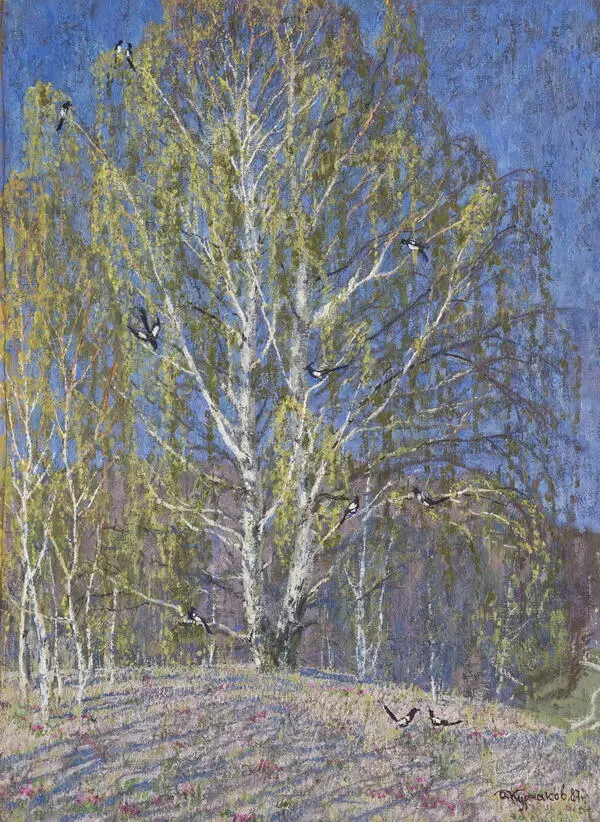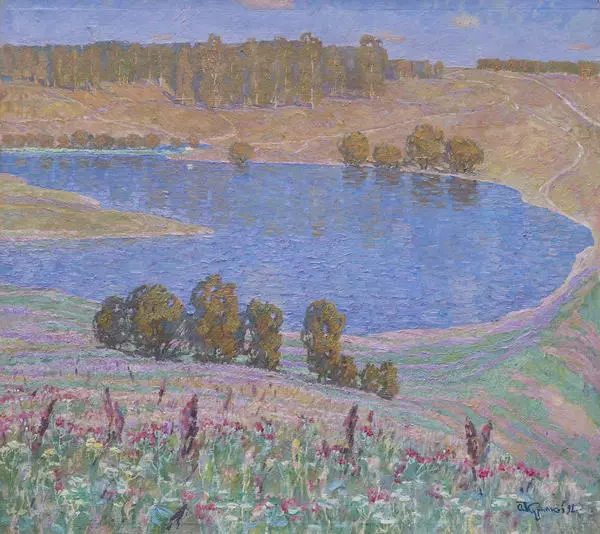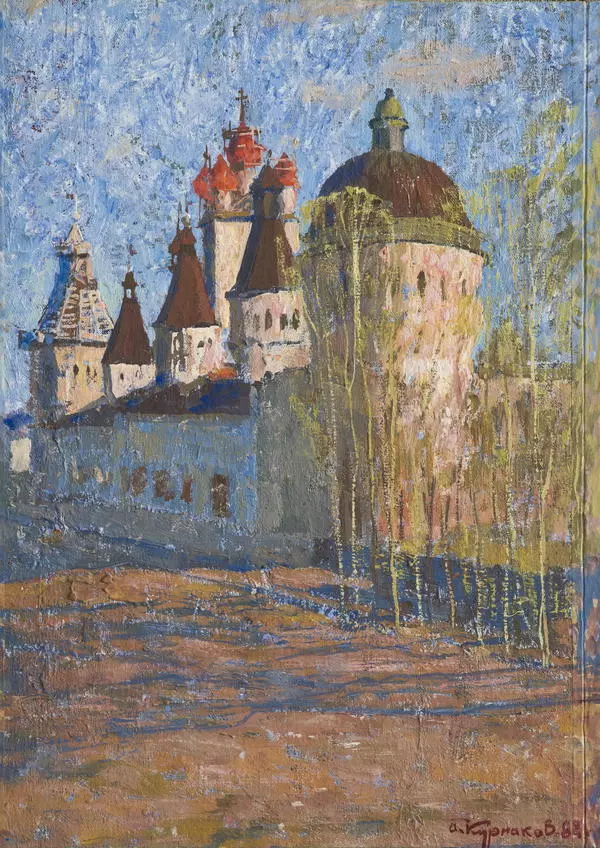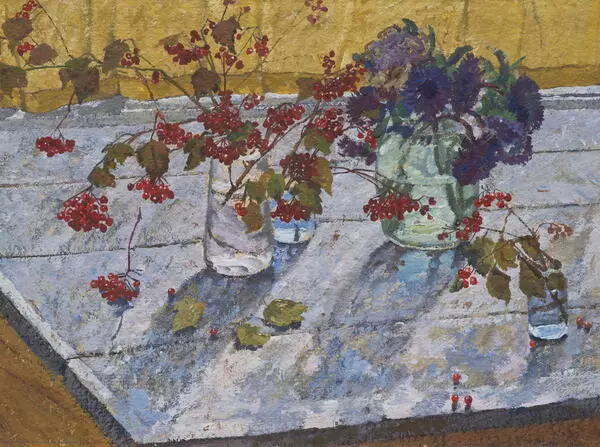Yevpatoria is one of the largest cities in Western Crimea. It was built by Greek colonists and was originally known as Kerkinitida. However, the ancient city was burned to the ground by the Huns. Later, the Ottoman Turks built their fortress Gözleve there. The name of the fortress can be translated as “one hundred eyes”. In the Tatar language, it was called Kezlev. Its Russified version “Kozlov” sounded rather unpleasant since the Russian word “kozyol” means “a goat”. After Crimea was captured by the Russian Empire, the city’s name was changed due to its “dissonance” in 1784. It was renamed Yevpatoria in honor of the great Pontic king Mithridates VI Evpator, also known as “King of Kings”.
The sea is always warm in Yevpatoria, there are healing springs and golden beaches which are loved by both locals and tourists. The Kurnakovs might have also frequently visited Yevpatoria for a summer vacation. Andrey Kurnakov rarely painted seascapes, but this particular view seemed to have left an impression on him.
Kurnakov depicts Yevpatoria from the blue-green and restless sea which can be seen in the foreground of the painting. The sky in the background indicates that a storm is coming. Fishing boats and a buoy sway on the waves, with seagulls circling above. The artist paints the water and the sky in wide sweeping brushstrokes, creating an atmosphere of approaching bad weather. The golden coastal strip is deserted. Further behind the beach, a city panorama, the center of the painting’s composition, stretches across the width of the canvas.
The city is painted in a simplified manner, with the main focus placed on the white cathedral, which, although shifted slightly to the right, is one of the centerpieces of both the painting and the old Yevpatoria. The Church of St. Nicholas the Wonderworker (also known as the St. Nicholas Cathedral) is the second-largest church in Crimea in terms of height, area, and capacity. It was founded in 1893 in memory of the city’s liberation from enemy forces during the Crimean War. The Cathedral is believed to resemble the Hagia Sophia in Constantinople.
The other focal point of the cityscape, located slightly to the left of the center, is the light blue Juma-Jami, the main mosque of Yevpatoria. The mosque is clearly visible both from the sea and the coast. Built in 1552 under Khan Devlet I Giray, it had lost its magnificent minarets by the mid-20th century — they were fully restored only in 1985. Since this painting was created in the late 1950s, they are not depicted. Still lit by the sun, the city seems to have frozen, bracing itself for a thunderstorm. The image would have been completely still if not for the seagulls and waves adding liveliness and dynamics to the picture.
The sea is always warm in Yevpatoria, there are healing springs and golden beaches which are loved by both locals and tourists. The Kurnakovs might have also frequently visited Yevpatoria for a summer vacation. Andrey Kurnakov rarely painted seascapes, but this particular view seemed to have left an impression on him.
Kurnakov depicts Yevpatoria from the blue-green and restless sea which can be seen in the foreground of the painting. The sky in the background indicates that a storm is coming. Fishing boats and a buoy sway on the waves, with seagulls circling above. The artist paints the water and the sky in wide sweeping brushstrokes, creating an atmosphere of approaching bad weather. The golden coastal strip is deserted. Further behind the beach, a city panorama, the center of the painting’s composition, stretches across the width of the canvas.
The city is painted in a simplified manner, with the main focus placed on the white cathedral, which, although shifted slightly to the right, is one of the centerpieces of both the painting and the old Yevpatoria. The Church of St. Nicholas the Wonderworker (also known as the St. Nicholas Cathedral) is the second-largest church in Crimea in terms of height, area, and capacity. It was founded in 1893 in memory of the city’s liberation from enemy forces during the Crimean War. The Cathedral is believed to resemble the Hagia Sophia in Constantinople.
The other focal point of the cityscape, located slightly to the left of the center, is the light blue Juma-Jami, the main mosque of Yevpatoria. The mosque is clearly visible both from the sea and the coast. Built in 1552 under Khan Devlet I Giray, it had lost its magnificent minarets by the mid-20th century — they were fully restored only in 1985. Since this painting was created in the late 1950s, they are not depicted. Still lit by the sun, the city seems to have frozen, bracing itself for a thunderstorm. The image would have been completely still if not for the seagulls and waves adding liveliness and dynamics to the picture.


